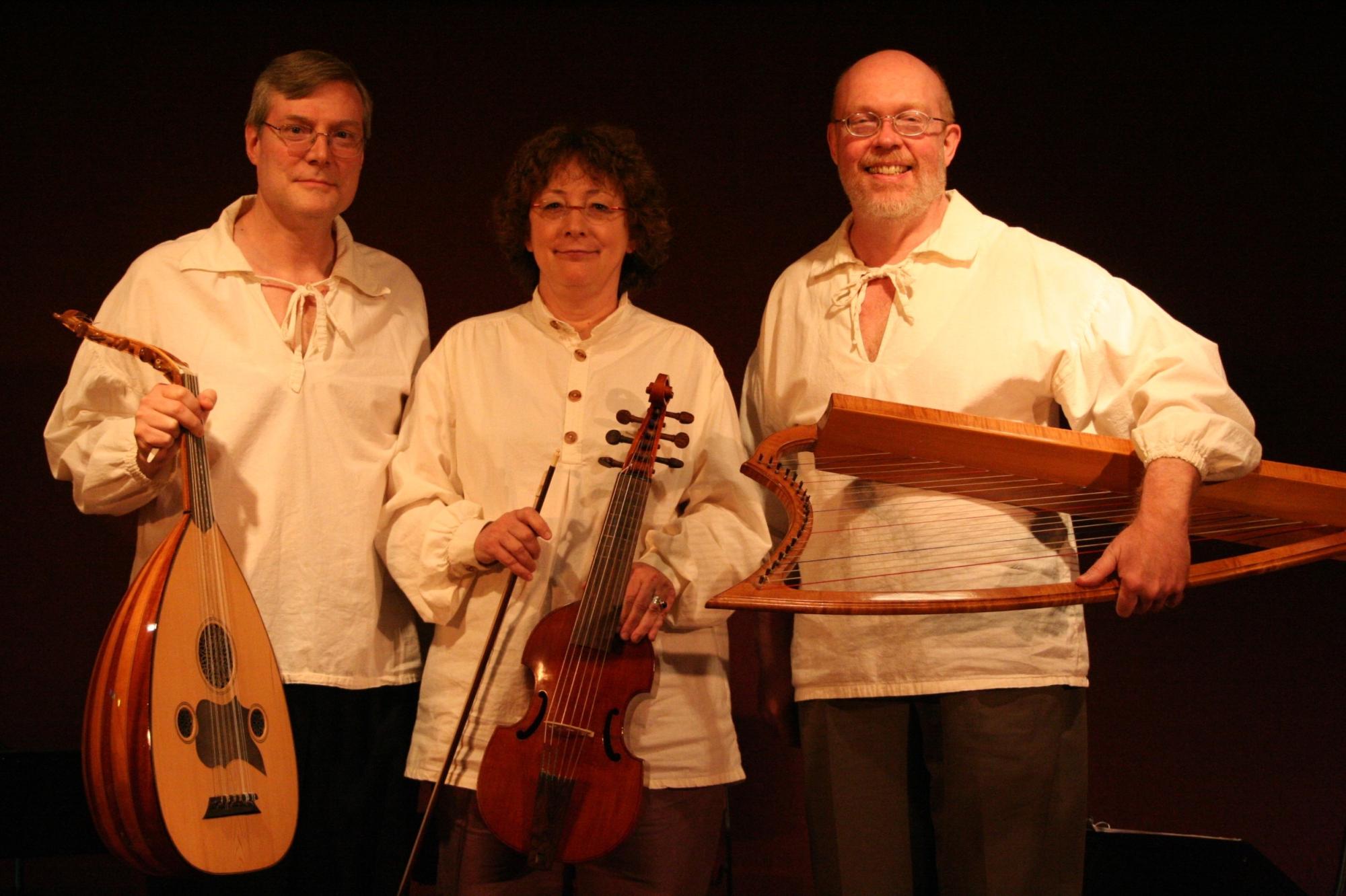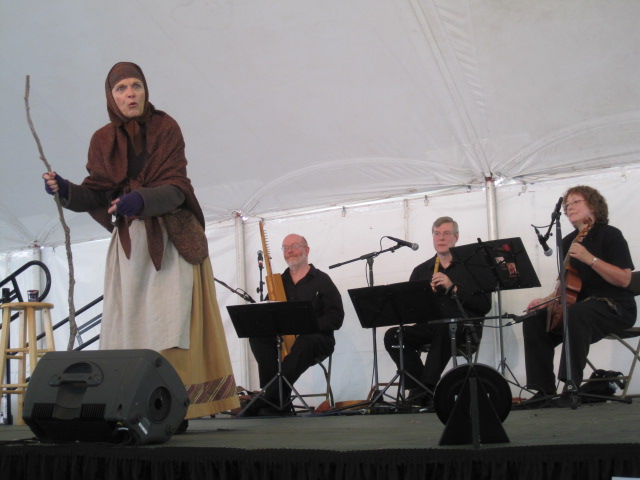Music Makes the Mood
How the music of medieval music trio PanHarmonium helps create context and emotion in the story Eglamore and Cristobel: A Love Story
Dolores Hydock brings 'Eglamore and Cristobel' from page to stage
-- Mary Colurso, The Birmingham News

Gilbert Ritchie, Susan Marchant, and David Cantrell -- the musicians of PanHarmonium
Dolores Hydock rummages in a storage bin and plops an important tool onto the patio table in her backyard.
It's a bright yellow baseball cap with the word "Cheerios" (her favorite breakfast cereal) stitched into the peak. A dramatic gesture. A prosaic piece of clothing. But it would be foolish to underestimate the utility of the cap for Hydock, a Birmingham actress, writer and storyteller.
She wears it while gardening at her Irondale home, reciting pieces of the works she creates and performs.
"I'm always talking to myself," Hydock says. "I have to explain to new neighbors that I'm not crazy."
On the contrary: While planting bulbs and pulling weeds, Hydock develops, tweaks and memorizes the tales in her extensive repertoire. These range from "Wash Me," an original anecdote that clocks in at 1 minute and 48 seconds, to the 70-minute "Silence: A Medieval Adventure in Story and Song."
Lately, the Cheerios cap has been much in evidence among the impatiens and Japanese maples, shielding Hydock's face from the sun as she has nurtured her latest project: "Eglamore and Cristobel: A Love Story."
Hydock adapted the story from a 44-page poem that's archaic yet evocative. Originally composed in Middle English, it provided the seeds of an 80-minute tale that includes jousting knights, faithful ladies, meddlesome counts and perilous journeys.
J.R.R. Tolkien fans will be happy to hear that at least one dragon makes a fire-breathing appearance. There's also a series of epic tasks to be accomplished by the steadfast hero.
Working on "Eglamore and Cristobel," Hydock says, was "like being an archaeologist on a scavenger hunt." The poem was obscure and therefore difficult to unearth, unlike Arthurian legends or literary standards such as "Beowulf."
But the text spoke to her somehow, with its focus on the mature love of a couple forced to endure separation and dramatic obstacles.
"It's about second chances," Hydock says, "about the power of love to hollow you out and fill you up."
She's been intensely focused on "Eglamore and Cristobel" for about three months, causing Hydock to feel that she and PanHarmonium, a trio that plays period-style instruments, are "reaching across the centuries."
"Stories written 700 or 800 years ago still have resonance," she says. "It was a violent, random, dangerous world. There are a lot of similarities to this time."
As she did with 2004's "Silence," Hydock will adopt the persona of a grumpy crone - a gossip-mongering, wisdom-spouting, occasionally humorous servant in a castle -- relating the story in costume and relying on an atmospheric prop she calls a storytelling staff.

The members of PanHarmonium -- Gilbert Ritchie, Susan Marchant and David Cantrell -- will be an integral part of every performance, setting the tone, providing crucial context and playing themes for the main characters.
Choosing, interpreting and arranging medieval music can be a daunting task, Hydock says, but PanHarmonium has proved more than equal to the challenge. These inventive Southern players have an affinity for history that serves them in good stead. Also, they have an intimate acquaintance with the qualities of harp, viol, oud (a precursor of the lute), psaltery (similar to a zither), riq (a tambourine-and-drum combo), hurdy-gurdy and tenor recorder. Best of all for Hydock, PanHarmonium understands that its goal is to serve the story.
"They're not just a live jukebox; they're shaping the material and giving it personality," she says. "They know what music can do to amplify and underscore. Music has a power to add an emotional depth to the words. I can't do that by myself."